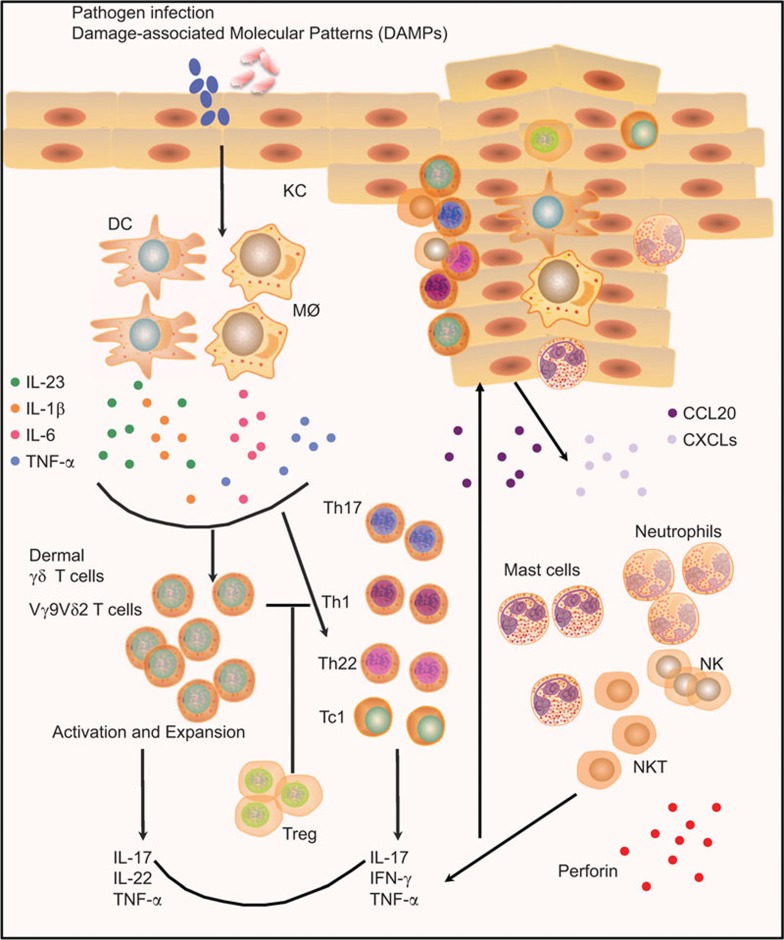Figure 1.
Dysregulated immune responses in psoriasis. Pathogen components or DAMPs activate the DCs and macrophages to produce IL-23, IL-1β and other pro-inflammatory cytokines including IL-6 and TNF-α. These cytokines induce dermal γδ T cells activation and expansion to secrete IL-17, IL-22 and TNF-α, which in turn further promote the conventional CD4+ T cell-mediated (Th1, Th17 and Th22) and CD8+ T cell-mediated (Tc1) acquired immune responses. In addition, skin infiltrating inflammatory cells, such as mast cells, neutrophils, NK cells and NK T cells, also contribute to the disease development via producing cytokines (IL-17), antimicrobial peptides and cytotoxic granules. Additionally, the dysfunctional Tregs lose their suppressive activity and some of them are able to convert to Th17 effector cells, further enhancing the inflammatory reaction in the local skin. The pro-inflamamtory cytokines and chemokines act on keratinocytes and induce keratinocyte hyperproliferation. The activated keratinocytes also produce some chemokines, such as CCL20 and CXCL1, 3, 8–11, to attract more immune effector cells infiltrating into skin, forming the amplified positive feedback loop, leading to the development of psoriatic lesions. DAMP, damage-associated molecular pattern; DC, dendritic cell; NK, natural killer; Th, T helper; TNF, tumor-necrosis factor; Treg, regulatory T cell.

